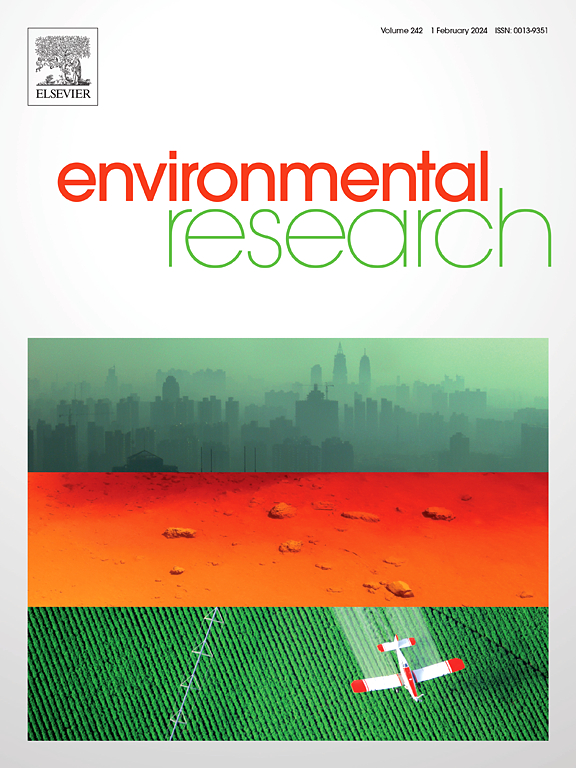Assessing the effects of electromagnetic fields generated by submarine power cables on the soft-bottom community: An ecological in-situ study
IF 7.7
2区 环境科学与生态学
Q1 ENVIRONMENTAL SCIENCES
引用次数: 0
Abstract
This study represents the first in situ investigation into the effects of magnetic fields (MFs) on soft-bottom macrofauna communities, laying the groundwork for further studies to better understand their potential consequences on marine ecosystems. Conducted in the Natural Park of the Strait (Southern Iberian Peninsula), the study measured MFs generated by HVAC cables and assessed their impact on soft-bottom macrofauna communities by comparing areas exposed to MFs with two control areas at different depths. Measured MF intensities were relatively low, with a maximum deviation from background levels of 34 nT near the cable, decreasing to 1 nT at 250 m distance. These intensities are considerably lower than those typically used in laboratory experiments inducing physiological effects (0.1–30 mT). Results revealed an increasing pattern of species richness (S) with depth, associated with sediment stability and different sediment characteristics. While analyses did not show significant effects of the magnetic field on macrobenthic communities overall, some indications were observed, such as decreased species richness at the deepest station and community homogenization across depths in the cable area compared to control zones. However, the varying patterns observed across different sites and depths necessitate further investigation, particularly considering the differences in MF intensities between field settings and controlled laboratory environments.

评估海底电缆产生的电磁场对软底生物群落的影响:一项生态原位研究。
本研究首次实地考察了磁场对软底大型动物群落的影响,为进一步研究磁场对海洋生态系统的潜在影响奠定了基础。该研究在海峡自然公园(南伊比利亚半岛)进行,测量了暖通空调电缆产生的微波辐射,并通过将暴露于微波辐射的区域与两个不同深度的对照区域进行比较,评估了它们对软底大型动物群落的影响。测量到的中频强度相对较低,在电缆附近与背景水平的最大偏差为34 nT,在250 m距离处降至1 nT。这些强度远远低于实验室实验中通常使用的诱发生理效应的强度(0.1至30 mT)。结果表明,物种丰富度(S)随深度增加,与沉积物稳定性和不同沉积物特征有关。虽然分析没有显示磁场对大型底栖生物群落的总体影响,但也观察到一些迹象,如最深站的物种丰富度下降,与控制区相比,电缆区各深度的群落均质化。然而,在不同地点和深度观察到的不同模式需要进一步调查,特别是考虑到现场设置和受控实验室环境之间MF强度的差异。
本文章由计算机程序翻译,如有差异,请以英文原文为准。
求助全文
约1分钟内获得全文
求助全文
来源期刊

Environmental Research
环境科学-公共卫生、环境卫生与职业卫生
CiteScore
12.60
自引率
8.40%
发文量
2480
审稿时长
4.7 months
期刊介绍:
The Environmental Research journal presents a broad range of interdisciplinary research, focused on addressing worldwide environmental concerns and featuring innovative findings. Our publication strives to explore relevant anthropogenic issues across various environmental sectors, showcasing practical applications in real-life settings.
 求助内容:
求助内容: 应助结果提醒方式:
应助结果提醒方式:


